

















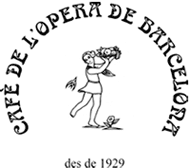 » Opera Supreme
» History
» Menu
» Reservations
» Specialties
» Events
» Photos and paintings
» Location
» Comments
» News
» Contact
» European historical cafes
» Opera Supreme
» History
» Menu
» Reservations
» Specialties
» Events
» Photos and paintings
» Location
» Comments
» News
» Contact
» European historical cafes
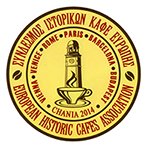 » Bottle Museum
» Bottle Museum

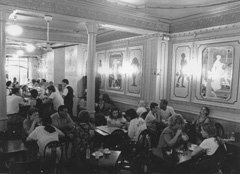
The premises are located in the most popular boulevard in the city and possibly the busiest route “paseo” in the world (per year), “La Rambla” whose Arabic origin is Ramla, was originally a seasonal river bed used as a road during the dry seasons.
The premises where “Cafè de l’Òpera” is located nowadays are next to the former 2nd set of city walls (13th Century), built parallel to the river bed or Rambla. The growth of the medieval city during the 14th and 15th centuries led to, on the one hand, the demolition of the 2nd city wall and on the other hand, the filling in of the river bed (thanks to the building of underground pipes to carry away the seasonal rains). La Rambla was converted into a boulevard. It was the hub of the new city, around which sprang up convents and the houses of nobles. In the 16th century the first trees were planted. During the 17th and 18th centuries the bourgeoisie gradually replaced the nobility and church. The convents began to disappear and palaces were built in their place. By the end of the 18th century la Rambla had become a glamorous boulevard with banks, street lamps, flower and bird kiosks.
The premises began its life in the 18th century as a boarding tavern. It was the point of departure for carriages linking villages in the region and other cities like Zaragoza and Madrid. With the arrival of the train and tramway, and the inauguration of what is now known as the “Gran Teatre del Liceu” in 1837, the tavern disappeared and a new business appeared in its place.
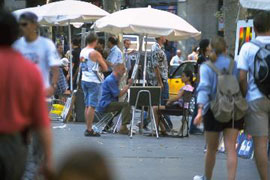
By the mid 19th century it had become a renowned “Chocolateria” refurbished in the Viennese style, typical wooden walls adorned with crystal chandeliers and classical paintings. A unique collection of mirrors from this period has been conserved to the present day, as have various parts of the decoration discovered under existing paintings.
A few years later another change was made, this time into a “Café-Restaurante” known as “la Mallorquina”, because the cook was from Mallorca. As such it became one of the most elegant restaurants in the city. It was a meeting place for the aristocracy and upper classes.
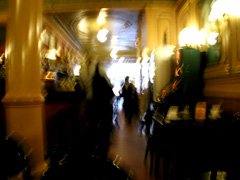
It was acquired at the end of 1928 by the present owners and according to the popular taste at the time, they reformed it in a modernist style with elements of the neo-classic. The café was inaugurated at the beginning of 1929 as “Cafè de l’Òpera”. Since then it has never stopped operating, not even during the Spanish civil war, 18 hours a day, 365 days a year.
Today the premises is one of the listed buildings of Barcelona, it was restored in 1991 by the renowned architect A. Moragas and renovated again in 2004.It is a licensed bar restaurant with an immense selection of teas, whiskies and beers. Food (“tapas”, sandwiches, etc) is available at any time during opening hours.